Not just the economy, democratic values have also been collapsing in Sri Lanka
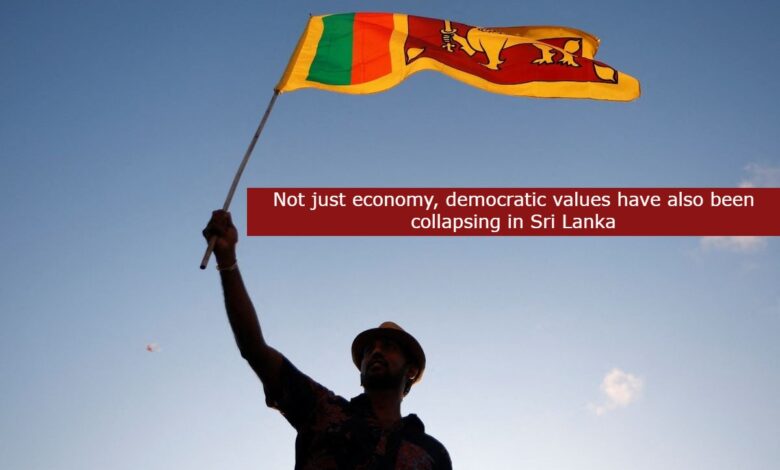
Not just economy, democratic values have also been collapsing in Sri Lanka
The situation in Sri Lanka has grown extremely delicate for over 21 million people, and the country is on the verge of collapse as a result of economic turbulence and financial disturbances.
This crisis is the outcome of irrational policy choices, the country’s heavy reliance on imports, and the depletion of foreign reserves. Even with its rising debt of more than $50 billion, the nation now lacks the resources to pay the interest on its loans. At the same time, democratic principles have become less prevalent in Sri Lanka.
The Formation of Crisis
The government began focusing on economic growth after the civil war ended in 2009. The country experienced a serious constitutional crisis in 201, and things got even worse. Ranil Wickremesinghe was fired and replaced by Mahinda Rajapaksa as prime minister by President Maithripala Sirisena in late 2018.
Broad income tax cuts, which were implemented later in 2019, reduced government revenue. The result was a decline in foreign reserves.
To make matters worse, the Covid-19 outbreak completely shut down Sri Lanka’s thriving tourism sector. Furthermore, a big crop failure occurred in 2021 as a result of the government’s decision to prevent the import of chemical fertilizers and instead encourage indigenous organic fertilizers.
The Sri Lankan economy is collapsing under the weight of massive debts, lost tourism earnings, other pandemic-related repercussions, and rising commodity prices. As a result, the country is on the verge of bankruptcy, with little money to import fuel, milk, cooking gas, and toilet paper.
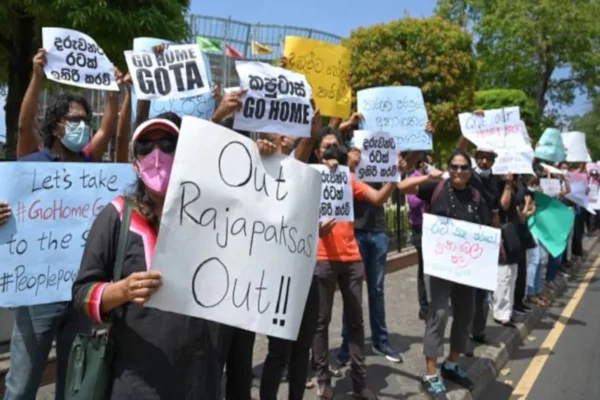
The southern neighbour’s economic crisis has been building for a while, and recent geopolitical events have pushed the country toward vulnerability and bankruptcy. The Sri Lankan government brought this problem upon themselves by making careless borrowings that even exceeded the country’s GDP.
The country suffered a lot for a long time, and the situation is still the same. Concessionary borrowings were replaced with commercial borrowings, which have higher interest rates and shorter maturity periods, as the nature of the loan changed through time.
Declining Values of Democracy
Since 2018, Sri Lanka’s Liberal Democracy Index has steadily decreased, according to the Sweden-based V-Dem Institute. It reached a peak in the previous 50 years in 2018, with a value of 0.48. The LDI, on the other hand, fell in late 2018 as a result of the country’s historic constitutional crisis.
Democracy Report 2022: Autocratization Changing Nature, the V-Dem institute’s most recent report, was published earlier this year. “Changes in Sri Lanka suggest an effort to consolidate authority under President Rajapaksa and his family members through constitutional modifications that remove constraints on executive power,” the report said.
The Electoral Democracy Index also decreased after 2018 in addition to the LDI. It considers the fundamental importance of making leaders accountable to the people. Along with the democratic indices, the core civil society index, which measures the strength of civil society, has dropped.
In 2018, when it had a value of 0.89, it was at its highest. However, it started to fall shortly after that. The index was 0.43 in 2021.
According to an assessment by V-Dem, Sri Lanka’s use of the Covid-19 pandemic to undermine democratic institutions and ideals and endanger democracy was one of several factors contributing to the country’s significant drop in democratic indices.
The Sri Lanka crisis: Why are other countries facing similar economic turmoil?
Not just in Sri Lanka, but globally, there is an economic crisis. From Europe to Asia to Africa, many developing economies are causing instability. Why, and what follows, are explained here.
President Gotabaya Rajapaksa and Prime Minister Ranil Wickremesinghe of Sri Lanka have declared their intention to step down in order for an all-party transitional administration to take office.
Over the weekend, thousands of protesters entered both men’s palaces in Colombo as the bankrupt island nation descended into its greatest economic crisis.
Images displayed demonstrators relaxing on beds and padded seats, swimming, exercising, playing the piano, and indulging in delicious meals. Also presented was a shocking peek at the way of life of the political elite.
A nation of 22 million people has been denied some of the most fundamental survival needs for months. Since Friday, neither Rajapaksa nor Wickremesinghe has been spotted in public.
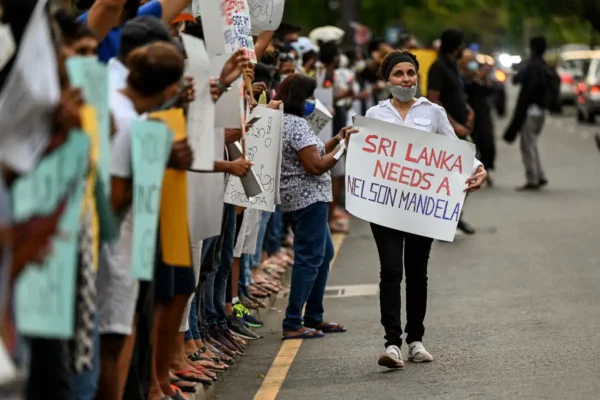
After weeks of rallies, brutal clashes between groups supporting and opposing the government broke out in May, resulting in eight fatalities and more than 200 wounded. Mahinda Rajapaksa, the prime minister, was compelled to resign.
The younger brother of Mahinda Rajapaksa, Gotabaya Rajapaksa, chose Ranil Wickremesinghe to be the new prime minister despite being vehemently resisted in calls for resignation.
But it’s obvious that it hasn’t worked. Since Sri Lanka has almost run out of money to import petroleum, there are larger queues of people vying for space to buy cooking gas in addition to gasoline and diesel. The cost of living has skyrocketed.
The disturbance is also intensified by a serious lack of necessities including food, medicine, electricity, and other items. However, similar incidents may be emerging in many other countries.
Why Are Sri Lankan People So Angry And Frustrated?
Rage toward the government has intensified as the country’s 21 million citizens have been forced to suffer extended power outages, long queues for more expensive gasoline, and other basic needs. Food inflation is around 80%, and several products, such as wheat and milk powder, are in limited supply.
Sri Lankans are extremely frustrated with the current situation, as they feel powerless in the face of financial insecurity and economic upheaval. People are lacking in fundamental necessities and essential products. They are denied their rights. When the president ran away from the situation, it made it even worse for the entire country to cope with such a scenario.
The Crisis in Lanka
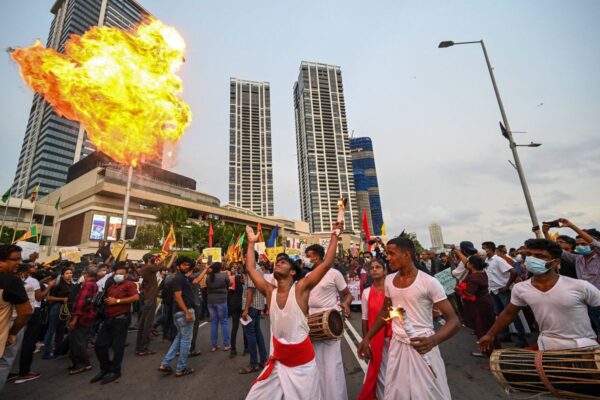
Before we get to them, let’s take a quick look at what precipitated Sri Lanka’s current state of anarchy. As the Rajapaksas dominated Sri Lanka’s political scene, they were accused of authoritarianism, nepotism, and corruption. The country ultimately declared default on its debt in May.
Instead of exporting goods, Sri Lanka focused on domestic markets. As a result, import costs rose while export revenues stayed low.
The Easter Sunday terror attacks in April 2019 had a negative impact on Sri Lanka’s tourist sector, which is one of its main sources of foreign exchange. The country, which relied heavily on imports, will soon face supply shortages.
In November 2019, President Gotabaya proposed broad tax cuts, which caused the loss of a million taxpayers and substantial revenue in a country already struggling with recurring budget deficits.
Then the Covid-19 outbreak struck, halting tourist arrivals and depleting foreign exchange reserves, sending Sri Lanka’s debts into a spiral.
The government banned the import of chemical fertilizers in 2021 in an effort to restrict the flow of foreign funds. Farmers were urged to use organic fertilizers in their place.
This led to enormous crop failures. The inability to purchase food items with foreign currency made the situation worse.
However, not everything that happens in one country stays in that country and sometimes it spreads to other regions and nations as well. Many other debt-ridden nations are dealing with similar food and fuel shortages and soaring prices.
But Can’t Sri Lanka produce its own food?
A government prohibition on synthetic fertilizer in 2021 is to blame for the food scarcity since it prevented farmers from accessing organic fertilizer, leading them to abandon their farms.
India provided Sri Lanka with unprecedented aid this year, totalling $3.8 billion: MEA.
Referring to the serious political turmoil in Colombo, India stated on Sunday that it supports the Sri Lankan people in their aspirations for prosperity and growth through democratic processes, and established institutions.
After months of unrest over the ongoing economic crisis, the Ministry of External Affairs (MEA) made its observations on the same day after tens of thousands of enraged protesters stormed and embattled President Gotabaya Rajapaksa’s official residence and set Prime Minister Ranil Wickremesinghe’s private home on fire.
According to MEA Spokesperson Arindam Bagchi, India continues to closely monitor the events in Sri Lanka and is aware of the severe challenges that the country faces and its citizens have been dealing with.
On Saturday, Gotabaya Rajapaksa made his resignation announcement. Additionally, Prime Minister Wickremesinghe declared that he would resign when a new administration had been created.
India is Sri Lanka’s nearest neighbour, and the two countries have a rich cultural past. “We are aware of the tremendous problems that Sri Lanka and its people have faced, and we have backed them as they have attempted to navigate this tough period,” Bagchi stated.
The MEA official stated that India supports the Sri Lankan people.
He remarked that India “stands with the people of Sri Lanka and they seek to fulfill their dreams of prosperity and growth via democratic means and values, established institutions, and a constitutional framework.”
In support of Sri Lanka’s crucial role in our Neighborhood First strategy, he said, “India has offered this year itself an unprecedented contribution of nearly USD 3.8 billion to ease the catastrophic economic situation there.
Massive street protests erupted in Sri Lanka in recent months as the country’s economic situation deepened. As a result of the public outrage, all of the cabinet ministers resigned from their positions. People came to the streets to protest and were frustrated with the country’s economic condition.
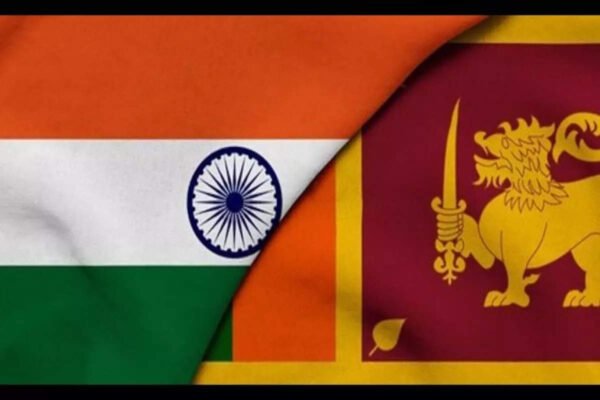
In May, to address the problem, President Rajapaksa named Wickremesinghe as Prime Minister.
There were increasing demands for Gotabaya Rajapaksa’s resignation. He had, however, already turned down the demand.
The Turmoil in Pakistan
Let’s take a look at Pakistan as an example. It managed to avoid defaulting on its debt despite recent rises in its fuel import bill and depletion of necessary foreign exchange reserves for export.
A complete economic collapse in Pakistan will be more worrying for the rest of the world due to a variety of factors, including fundamentalism, nuclear weapons, and the Taliban’s presence both inside the country and in its immediate surroundings.
Pakistan, like Sri Lanka, has requested the International Monetary Fund (IMF) for a bailout while routinely asking its citizens to pay more for gasoline and electricity.
Pakistan’s trustworthy friend, China, gave a loan of $2.3 billion. But in addition to not being able to offer a long-term fix, these loans are also contributing to the issue, and this was seen even in Sri Lanka’s circumstances.
Chinese Trap
The South Asian island nation of Sri Lanka’s economic problems was exacerbated by China’s investments in infrastructure projects, known as debt traps, which enhanced Chinese control over Sri Lanka.
Sri Lanka borrowed heavily from China to close years of budget shortages and purchase supplies the country required to function.
However, it lost a lot of money on the construction of exorbitant and useless transportation, hospitality, aviation, and other such facilities, further straining the public purse.
A major number of the construction projects are currently dormant after incurring significant losses and failing to repay Chinese debts that grew in size.
China, Sri Lanka’s largest bilateral lender, is the sole winner. Contracts were awarded to Chinese enterprises, and China will get equity in real estate.
Sri Lanka is negotiating for assistance with Japan, China, India, and even a war-torn Russia. To date, India has provided about $3 billion in assistance to Sri Lanka, including a $400 million swap and $1.5 billion in credit lines. However, China does not behave in this way.
Other Nations
Sri Lanka and several countries with a clear Chinese connection, including Argentina, Venezuela, Zambia, and others, have also defaulted, and many more are poised to do the same. It’s difficult, for example, to overlook a $360 million project to modernize Zambia’s international airport.
Lebanon, like Zambia, has asked for international assistance to restructure its loans after a financial crisis caused crippling outages and a shortage of pharmaceuticals.
In addition to debt, Laos is suffering from high inflation, currency depreciation, and a lack of dollars, all of which have resulted in stratospheric rises in the cost of consumer goods and energy. China’s influence seems to be everywhere, but Covid continues to play a part in most emerging economies’ collapse.
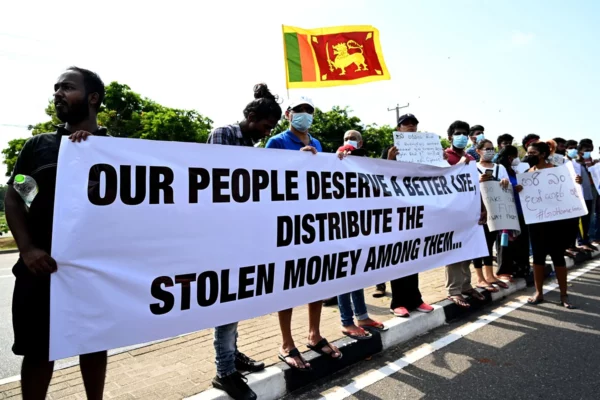
Not only Sri Lanka, though. Laos has a $13.3 billion debt to its government, much of which has been used to fund infrastructure projects, many of which are supported by China. It makes sense that the upheaval in Sri Lanka has elicited stern responses from the IMF president and a warning to G20 countries about global debt.
Sri Lanka was the first emerging country to collapse, but it won’t be the last. Its green agricultural policies and weak leadership caused it to collapse faster than other emerging countries.
Immediate Triggers and What Next
Fuel and other import costs have increased due to Russia’s invasion of Ukraine and rising US interest rates, which have led inflation to skyrocket.
Naturally, the nations with the highest borrowing loads are the most badly affected. These factors have exacerbated Sri Lanka’s economic crisis, which has since developed into a full-fledged political uprising despite the that few people are aware of certain anti-government organizations.
Most countries are following Sri Lanka’s example. To suppress unrest, Germany, Greece, Spain, and Portugal in Europe have announced tax breaks and energy subsidies. Zambia and Nigeria have followed suit in Africa.
Asia’s Philippines, Singapore, and Indonesia are increasing social spending and providing direct financial aid. However, experts believe that the rush to use such measures to soften the damage may only increase the commotion.
Not only is the economy crumbling, but so are democratic values in Sri Lanka, leading to an overall economic catastrophe. People are upset and frustrated because there are food shortages and basic necessities are so expensive. Furthermore, the country’s democratic values have been broken. What could happen next if this is the country’s current situation?
What steps is the government taking to address the crisis?
So far, Sri Lanka has stumbled through, aided primarily by $4 billion in credit lines from India. In June, an Indian group visited Colombo for talks on more aid, but Wickremesinghe warned against expecting India to keep Sri Lanka afloat for long.
A June headline in the Colombo Times said, “Sri Lanka casts final hopes on IMF.” The government is negotiating a rescue plan with the IMF, and Wickremesinghe has stated that a tentative agreement is most likely to be reached later this summer.
The UN initiated a global public plea for support earlier this month. Nonetheless, the projected funds merely scratch the surface of the $6 billion necessary to keep the government sustainable for the next six months.
To address Sri Lanka’s gasoline shortfall, Wickremesinghe recently informed The Associated Press that he might explore purchasing more heavily discounted oil from Russia.
The next government’s immediate economic goals will be to reconstruct two of Sri Lanka’s core economic pillars: tourism and agriculture.
Other key challenges include containing inflation, increasing exports, restoring international investor confidence, supporting remittance earnings, and attracting fresh foreign direct investment inflows into industries like tourism and manufacturing.
Addressing the balance of payment crisis will necessitate structural reforms to address constraints to domestic and foreign direct investment, industrial competitiveness, and exports, according to the development bank, which also urged support for small and medium-sized enterprises, which account for more than 20% of exports, 45% of employment, and 52% of GDP.
Furthermore, the country must find medium-term development options, like sustaining human capital development, tackling climate change, and growing renewable energy.
Edited by Prakriti Arora




